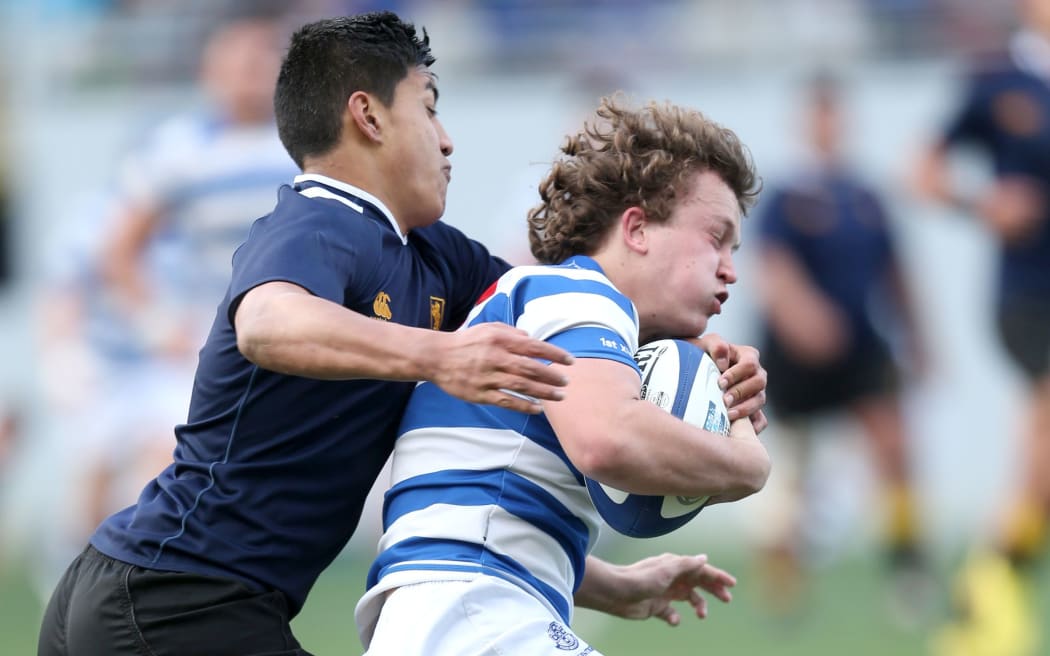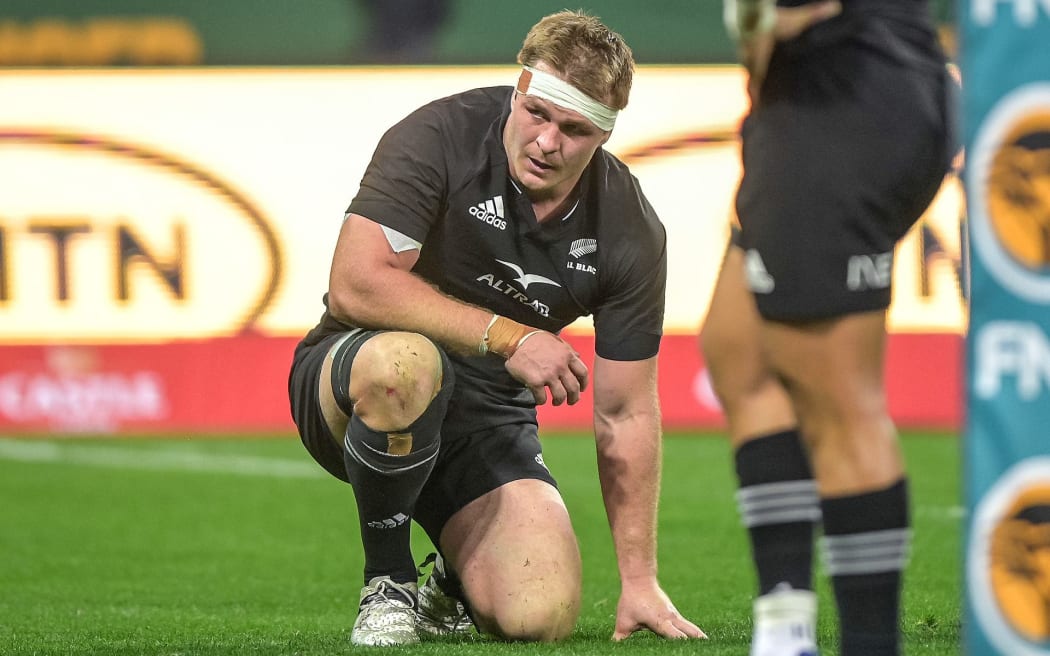Tackling tackle heights – will this make a difference?

The new tackle height is is being implemented in amateur grades only.
Photo: Photosport
Player safety is paramount. Well, that’s the intention, anyway, as NZ Rugby today announced the implementation of a new law around tackling that’s certainly going to have a number of players at senior levels needing some off-season adjustment training.
This isn’t a surprise – a change was floated a few years back when the word was the new standard for a high tackle would be anything above the nipples. NZR has gone even lower, though, taking it all the way down to the sternum in a bid to prevent head contact and open the game up at the same time.
Will it work? NZR’s head of community rugby Steve Lancaster says that while it’s primarily about safety, the new law has added benefits.
“We landed on the sternum because we had to have a point in the law to adjudicate, so what we’re trying to achieve is a lowering of the target zone from the chest to the belly area,” he says.
“We’ve got to get away from the sort of picket line defence and getting back to a game that creates space and continuity. Lowering the tackle height will give the ability to do that.”
Of course, rugby union simply can’t do the most obvious thing to create space, which would be to reduce the number of players on the field. But that hasn’t stopped it borrowing some less obvious ideas from league.
The last law change that purported to make things simultaneously safer and more exciting was the 50/22, a shameless copy of the 40/20 rule.
As per usual, league’s idea to encourage long kicks to mean wingers would drop back on the fourth tackle was almost 25 years old before union cottoned on. It did add a decent threat to league’s kicking game, but the jury is still out on how it’s affected union because kicking a 50/22 isn’t actually that difficult.
In fact, being able to send a kick to touch from a distance of 28 metres is so easy even props are doing it now. There’s probably a case to be made that it’s making the game safer, because all the extra kicking is admittedly stopping the ball carrier from going into contact.
However, that’s pro rugby. This new lowered tackle height is being strictly implemented in amateur grades only, so kids watching the All Blacks and Super Rugby will be seeing something potentially very different to what they play on a Saturday morning or afternoon. This presents a challenge, but Lancaster says it will be overcome with communication.
“This is quite a significant shift because we’re realising that the laws for the community game and professional game don’t have to be the same. What we’re saying now is that one involved fully pro players and coaches, with skill levels and conditioning such that you can’t compare those law applications to community rugby.”
There is even an example this season of how the law would at least have helped at least one All Black. Sam Cane was forced from the field in the first Bledisloe Cup test in Melbourne, thanks to a head clash with David Havili in a tackle, due to both men standing at the same height in a tackle attempt.
Due to the point of the change being to incentivise one tackler hitting the midsection, these sort of friendly fire incidents should decrease.

Sam Cane suffered a head injury earlier this season while lining up a tackle.
Photo: Photosport
While the ultimate responsibility is on the players, much of this will come down to volunteer referees and coaches, especially at school grades where habits form. That will require buy-in that Lancaster is confident of achieving.
“The next step for us is to produce a lot of coaching and refereeing resources. Coaches by and large do a really good job of teaching players how to tackle properly at the community level, so we want to support that and not ask any more than lowering the legal height,” Lancaster says.

Coaches and referees will need to be brought up to speed on the tackle change, NZ Rugby says.
Photo: 123RF
Will rugby ever be truly safe? No, because even if high tackles are eliminated, there are still plenty of ways to get hurt. While Cane recovered from his Bledisloe head knock, his season is now over due to a perfectly legal clean-out at a ruck that left him with a broken cheekbone.
This does certainly feel like a step in the right direction, though. Perhaps in a generation we’ll see professional players tackling lower, because that’s all they’ll ever have known.
For all the latest Sports News Click Here
For the latest news and updates, follow us on Google News.
